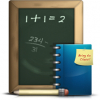Free Online Productivity Tools
i2Speak
i2Symbol
i2OCR
iTex2Img
iWeb2Print
iWeb2Shot
i2Type
iPdf2Split
iPdf2Merge
i2Bopomofo
i2Arabic
i2Style
i2Image
i2PDF
iLatex2Rtf
Sci2ools
CHI
2005
ACM
2005
ACM
A logic block enabling logic configuration by non-experts in sensor networks
Recent years have seen the evolution of networks of tiny low power computing blocks, known as sensor networks. In one class of sensor networks, a non-expert user, who has little or no experience with electronics or programming, selects, connects and/or configures one or more blocks such that the blocks compute a particular Boolean logic function of sensor values. We describe a series of experiments showing that non-expert users have much difficulty with a block based on Boolean logic truth tables, and that a logic block having a sentence-like structure with some configurable switches yields a better success rate. We also show that a particular use of color with a truth table improves results over a traditional truth table. Categories & Subject Descriptors H5.m. Information interfaces and presentation: Miscellaneous. General Terms Design; Experimentation; Human Factors Keywords Sensor networks; Boolean logic; embedded computing systems; truth table; eBlocks
Boolean Logic Truth | CHI 2005 | Human Computer Interaction | Particular Boolean Logic | Sensor Networks |
| Added | 30 Nov 2009 |
| Updated | 30 Nov 2009 |
| Type | Conference |
| Year | 2005 |
| Where | CHI |
| Authors | Susan Cotterell, Frank Vahid |
Comments (0)

